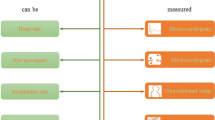Abstract
Detection of drivers' states is the essential technology not only to prevent car accidents related with their state but to develop self-driving car. Detecting technology generally uses two types of methods; physiological measures and vehicle-based measures. Vehicle-based measures have advantages compared to physiological method such as non-additional device, unsophisticated process and less computational power. For these reasons, vehicle-based measures are used for this study to build the detection system about 3 states; normal, drowsy and drunk driving. In order to achieve this purpose, three types of algorithm models are suggested using vehicle simulator experiments with twelve participants on three states; normal, drowsy and drunk. By analyzing the accuracy of each input packet data combination, the feature values, the configuration of the input data calculated through the vehicle driving data is used to derive the influential factors for predicting the driver state. The results of the models indicate high accuracy and give the possibility to be applied on detecting 3 states in real driving vehicles with the system using combination of developed models.
Similar content being viewed by others
References
Arnedt, J. T., Wilde, G J., Munt, P. W. and MacLean, A. W. (2001). How do prolonged wakefulness and alcohol compare in the decrements they produce on a simulated driving task?. Accident Analysis & Prevention 33, 3, 337–344.
Dai, J., Teng, J., Bai, X., Shen, Z. and Xuan, D. (2010). Mobile phone based drunk driving detection pervasive computing technologies for healthcare. Proc. 4th Int. Conf. Pervasive Computing Technologies for Healthcare, Munich, Germany.
Dawson, D. and Reid, K. (1997). Fatigue, alcohol and performance impairment. Nature 388, 6639, 235.
Eskandarian, A. (2012). Handbook of Intelligent Vehicles. Drowsy and Fatigued Driving Problem Significance and Detection Based on Driver Control Functions. Springer-Verlag London, London, UK.
Fu, R. and Wang, H. (2014). Detection of driving fatigue by using noncontact EMG and ECG signals measurement system. Int. J. Neural Systems 24, 3, 1450006.
Jeong, C, Kim, B., Yu, S., Suh, D., Kim, M. and Suh, M. (2013). In-vehicle display HMI safety evaluation using a driving simulator. Int. J. Automotive Technology 14, 6, 987–992.
Kojima, S., Maeda, S., Ogura, Y, Fujita, E., Murata, K., Kamei, T. and Yoshizumi, M. (2009). Non-invasive biological sensor system for detection of drank driving. Proc. 9th Int. Conf. Information Technology and Applications in Biomedicine, Larnaca, Cyprus.
Krajewski, J., Sommer, D., Trutschel, U., Edwards, D. and Golz, M. (2009). Steering wheel behavior based estimation of fatigue. Proc. 5th Int. Driving Symp. Human Factors in Driver Assessment, Training and Vehicle Design, Big Sky, Montana, USA.
Lamond, N. and Dawson, D. (1999). Quantifying the performance impairment associated with fatigue. J. Sleep Research 8, 4, 255–262.
Lee, J. D., Fiorentino, D., Reyes, M. L., Brown, T. L., Ahmad, O., Fell, J. and Dufour, R. (2010). Assessing the Feasibility of Vehicle-based Sensors to Detect Alcohol Impairment. DOT HS 811-358 Washington, DC: National Highway Traffic Safety Administration.
Leng, H. J. and Lin, Y. Z. (2010). Design and experimental study of a CNT sensor for measuring alcohol content with short response delay. IEEE Sensors J. 10, 6, 1091–1097.
Li, Z., Jin, X. and Zhao, X. (2015). Drunk driving detection based on classification of multivariate time series. J. Safety Research, 54, 61.e29–64.
Li, Z., Jin, X. andZhao, X. (2015). Drunk driving detection based on classification of multivariate time series. J. Safety Research, 54, 61.e29–64.
McDonald, A. D., Schwarz, C., Lee, J. D. and Brown, T. L. (2012). Real-time detection of drowsiness related lane departures using steering wheel angle. Proc. Human Factors and Ergonomics Society Annual Meeting 56, 1, 2201–2205.
Moon, B. J., Yeon, K. B., Lee, S. G, Hong, S. P., Nam, S. Y and Kim, D. H. (2012). Drowsy driving algorithm using a steering angle sensor and state of vehicle. J. Institute of Electronics Engineers of Korea 49, 2, 30–39.
Niedermeyer, E. and da Silva, F. L. (2005). Electroencephalography: Basic Principles, Clinical Applications, and Related Fields. Lippincott Williams &Wilkins. Philadelphia, USA.
Park, C. H., Kwon, M. H., Jeong, N. T., Lee, S., Suh, M. W, Kim, H. S. and Hwang, S. H. (2014). Development of electric vehicle simulator for performance analysis. Universal J. Mechanical Engineering, 2, 7, 231–239.
Robinel, A. and Puzenat, D. (2013). Multi-user blood alcohol content estimation in a realistic simulator using artificial neural networks and support vector machines. Proc. European Symp. Artificial Neural Networks, Computational Intelligence and Machine Learning, Bruges, Belgium.
Sayed, R. and Eskandarian, A. (2001). Unobtrusive drowsiness detection by neural network learning of driver steering. Proc. Institution of Mechanical Engineers, Part D: J. Automobile Engineering 215, 9, 969–975.
Suite (2010). Asleep at the wheel: The prevalence and impact of drowsy driving. Drivers 279, 7, 80.
Tefft, B. C. (2014). Prevalence of Motor Vehicle Crashes Involving Drowsy Drivers, United States, 2009–2013. AAA Foundation for Traffic Safety. Washington, D.C., USA.
Wang, M. S., Jeong, N. T., Kim, K. S., Choi, S. B., Yang, S. M., You, S. H., Lee, J. H. and Suh, M. W (2016). Drowsy behavior detection based on driving information. Int. J. Automotive Technology 17, 1, 165–173.
Williamson, A. M. and Feyer, A. M. (2000). Moderate sleep deprivation produces impairments in cognitive and motor performance equivalent to legally prescribed levels of alcohol intoxication. Occupational and Environmental Medicine 57, 10, 649–655.
Zhang, X., Zhao, X., Du, H. and Rong, J. (2014). A study on the effects of fatigue driving and drunk driving on drivers' physical characteristics. Traffic Injury Prevention 15, 8, 801–808.
Acknowledgement
This work was supported by GRRC program of Sungkyunkwan University.
Author information
Authors and Affiliations
Corresponding author
Rights and permissions
About this article
Cite this article
Lee, K.H., Baek, K.H., Choi, S.B. et al. Development of Three Driver State Detection Models from Driving Information Using Vehicle Simulator; Normal, Drowsy and Drunk Driving. Int.J Automot. Technol. 20, 1205–1219 (2019). https://doi.org/10.1007/s12239-019-0113-9
Received:
Revised:
Accepted:
Published:
Issue Date:
DOI: https://doi.org/10.1007/s12239-019-0113-9




